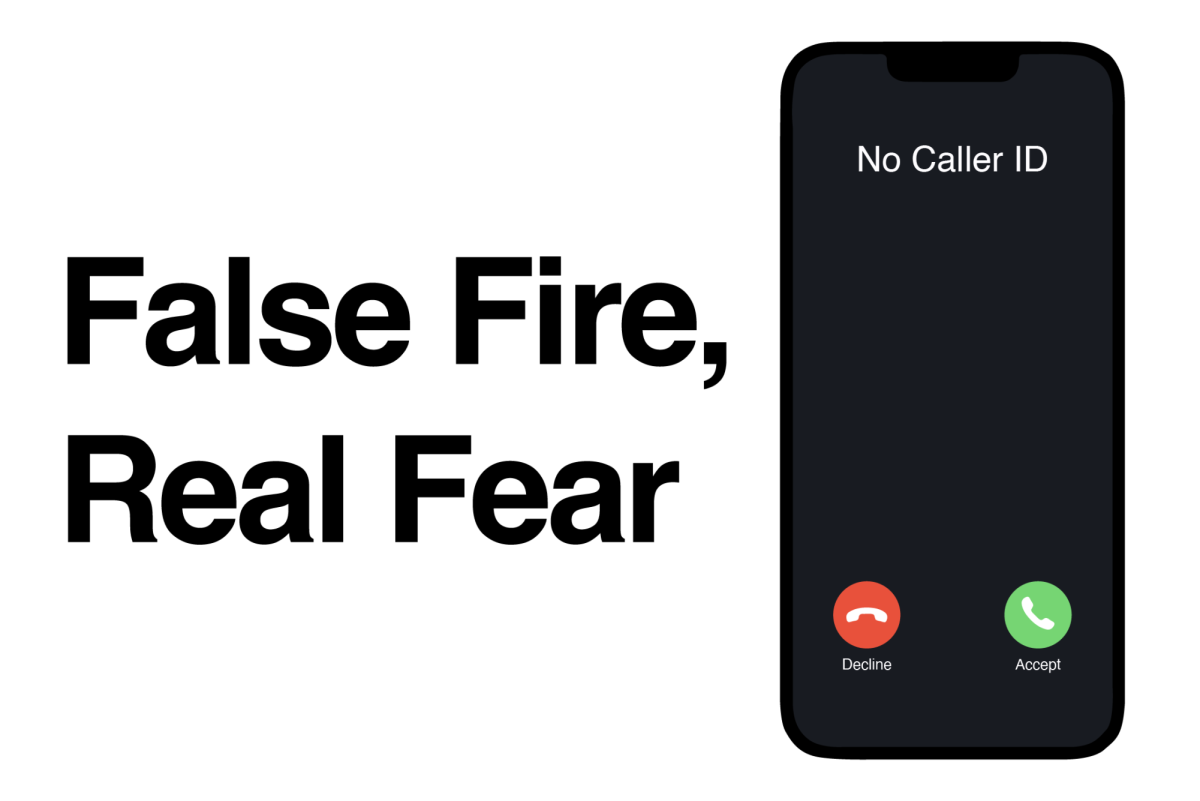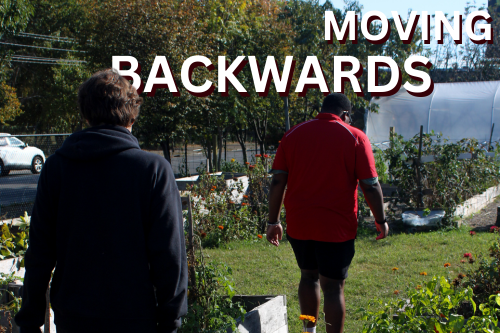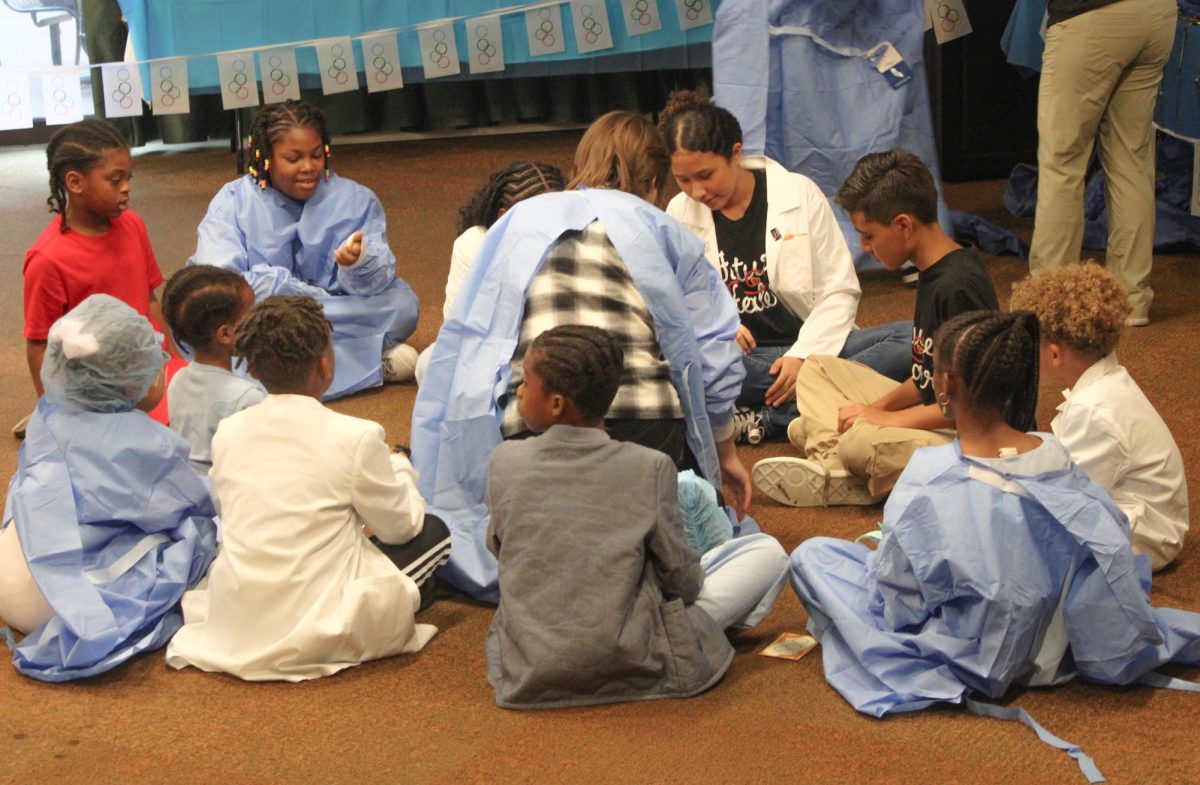The room was silent aside from our rapid, shaky breaths. Lights out, shades down, and desks shoved to the side of the room, one could barely imagine what it had looked like just five minutes before.
Phones still hung in the pockets across the room, pencils sat patiently next to closed computers, and the test we should’ve been taking lay untouched on the table at the front of the class.
Crushed in the corner, surrounded by my classmates, dread began hardening in my stomach.
A pair of blue scissors pressed against the skin of my left hand — the only item in my bag that even resembled a weapon. I was frozen, my eyes unwavering from the door, and my ears straining for the sound that would signal that the announcement from our principal had been true.
The sound of a gunshot.
Wednesday, November 8, 2023
At approximately 9:12 AM, LMPD received an urgent call from someone inside the school “claiming to be a victim on the second floor,” according to a statement from LMPD Deputy Chief Steve Healey in an article from Louisville Public Media. This threat resulted in immediate action from the police force. At around 9:17, the school was placed on full lockdown, with some classes barricading doors and others gathering possible weapons to protect against the “aggressor.”
For Anna Colvin, a freshman in YPAS guitar, her study skills block began like any other — until the unexpected announcement blared above her head: “Lockdown, lockdown, this is not a drill.”
This is not a drill.
The words rang in her head, and she didn’t fully comprehend what was happening until her teacher began shoving tables towards the door.
“I thought we were going to die,” Colvin said.
For the next hour, students and staff sat as silent as possible in their rooms, holding their breath for the dreaded sounds of screams and gunfire.
None came.
With my phone all the way across the room and no way to communicate or tell time, I had no idea how long I sat there. I didn’t know what was going on at YPAS or the Annex — I didn’t even know what was going on in my own building.
Footsteps pounded up the stairs. Men yelled just beyond the door. They told us to open the door, saying that they needed to ensure there were no hostages being held. My eyes never left the guns in their hands, even as they busied themselves with radioing people through their walkie-talkies, even as they assured us they were just taking precautions. Was there someone in the building with one just like it?
We retrieved our phones, scrolling through missed calls, messages, and news headlines.
Soon, we found that there was no one in the building. There was never anyone in the building. No guns, no victims, and no real threat.
After officially clearing the school at around 10:15, officers referred control back to the principal, who then announced that anyone who wished to leave school early would be excused.
The events that occurred that day are categorized by LMPD as “swatting,” or the “action or practice of making a prank call to emergency services in an attempt to bring about the dispatch of a large number of armed police officers to a particular address.”
Even after Colvin found out that it was a fake alert, she was shaken for the rest of the day. While her previous school, Holy Trinity, practiced lockdowns, nothing came close to the threat of shooting. Even with reassurances that it would be unlikely to occur again, Colvin still worries how people will react if another one occurs. Would people still respond with the same urgency as in November?
“They kept telling us there’s an active shooter in the building, like, this is real,” Colvin said. “Next time they say the same thing, we might be like, ‘oh it’s not real.’”
Unfortunately, this event isn’t as uncommon as one might think. That same day, another school in Louisville was impacted by these false threats.
Reaching for his phone, Robert Bell froze, his fingers inches from the screen. He’d intended to start a timer for his seventh grade English class at Olmsted Academy North, a Louisville middle school, when he noticed an alert at the top of his phone.
There was an active shooter at duPont Manual High School.
For a moment, he didn’t know how to react. Fear for the students and staff at Manual came first, and as the class went on, his messages began flooding with alerts of an active shooter in his own building.
For Bell, the experience was terrifying, but to the 7th graders in his classroom, nothing was amiss.
“My students didn’t really realize what was going on because they don’t have access to phones during the day,” Bell explained.
So he continued his lesson, to ensure that his students were completely oblivious to his fear. Until, of course, it was revealed that both reports at Manual and at Olmsted were hoaxes. Many students didn’t know a lockdown had occurred until after it was over, but this usually isn’t the case according to Bell.
“We have a lot of lockdowns at my school, but they are usually due to violence in the neighborhood. This was actually a pretty low intensity one,” he said. “A lot of my students deal with more regular, quotidian gun violence in their daily lives, or the threat of it at least.”
Although these threats may be common among some students, not everyone has as much exposure to it—especially not at school.
One possible solution that had been discussed prior to the incident was the implementation of EVOLV systems, weapon detectors that use AI technology to scan the bags and containers of those who walk through the machine. Although some controversy surrounded the company, Manual carried out the installation of the systems throughout the school a little over two months later, in February of 2024.
Tuesday, February 6, 2024
The path from the parking lot, up the stairs, and into the building hadn’t changed; cars still flowed incessantly down the traffic line, teachers pulled into their respective spots, and students slowed their steps as they got closer to the entrance of the school. It was only as they entered the building that the scenery changed. New barriers stood between the new walkway and the EVOLV systems, with a ramp to the left transformed into an unloading area for “blue” items—items that may contain metal like binders and computers—to be removed, knowing the system would flag them.
Even so, as students walked through the machine, many bags still caused the machine to sound an alert. From there, those whose bags set off the alarm are searched by a staff member, and then cleared if no weapons are found.
While this process may seem tedious, many view it as a necessary precaution.
Dr. Michael Newman, the principal of Manual, announced the lockdown during the swatting incident in November, and because he didn’t know the exact threat at the time, he had to assume the worst.
“I have unfortunately been involved in a similar situation at another school. I knew the fear and concern students, parents, and staff were about to undergo,” he stated in an email. To prevent the actual threat of someone attempting to harm people in school, the EVOLV system offers a solution. “Their purpose is to deter and/or alert when weapons are brought into the building.”
Unfortunately, putting these systems into schools doesn’t solve the root of the problem: the people making the calls, who are nearly untraceable and waste LMPD’s resources. Since November there have been four more swatting calls in Louisville, all of them occurring on March 20th. The schools targeted, Ballard High, Atherton High, Westport Middle, and Wilder Elementary, had LMPD called to the scene due to “bomb threats,” forcing the evacuation of every student on campus.
On May 19, a Lexington school experienced a similar situation. Bryan Station High School was swatted over a bomb threat, eliciting a statement from Lexington Police Departments’ Sergeant Guy Miller, who described the severity of these situations as they continue.
“I think as people realize the severity of it, and hopefully that information gets out, and it’s not just a slap on the wrist then someone thinking about doing this might second guess themselves and not make that call,” Sgt. Miller stated in a televised interview for WKYT.
The police made no arrests after the November incident, and the threat itself lasted no more than an hour, but even after the school was cleared, nothing went back to normal. Although swatting doesn’t cause physical harm to those involved, its impacts are still felt by both staff and students, and can be seen in the actions taken by everyone involved in the aftermath—like the weapons defense systems, improved drill practice and other solutions.
“Our students deserve better,” read a Facebook post from the Jefferson County Teachers Association. “The terror created by these kinds of hoaxes causes real trauma for our students and educators who live with the constant fear of school shootings.”















